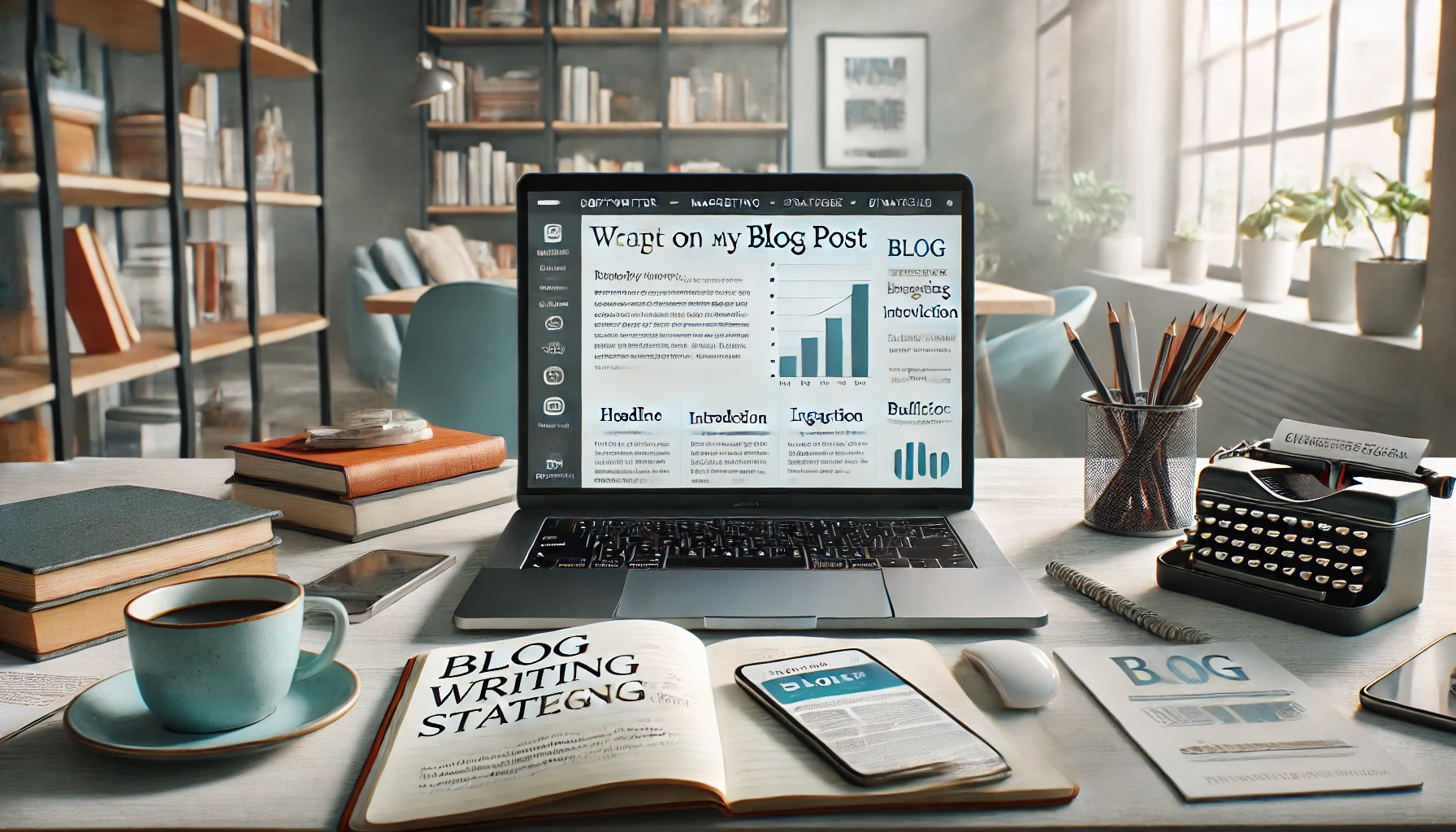Blog posts are one of the most powerful tools for engaging an audience, driving traffic to your website, and sharing valuable information. However, writing an effective blog post requires more than just presenting facts; it’s about creating engaging, valuable, and readable content that keeps the reader coming back for more. In this beginner’s guide, we’ll walk you through the essential elements of writing a blog post that resonates with your audience and achieves your goals.
1. Understand Your Audience
The first step in writing a compelling blog post is to understand who you’re writing for. Knowing your audience helps you tailor your content to meet their interests, needs, and challenges. A well-written post should provide value by addressing the reader’s pain points or offering solutions to their problems.
Here’s how to understand your audience:
- Create buyer personas: These are fictional representations of your ideal readers. Consider their demographics, interests, and challenges.
- Research your audience: Use analytics, surveys, or feedback from previous posts to gather insights into what your readers are interested in.
- Engage with your audience: Encourage comments, questions, or social media interactions to learn more about your audience’s preferences and what they want from your content.
Understanding your audience ensures that you write blog posts that are relevant, valuable, and engaging.
2. Pick a Relevant and Engaging Topic
Once you understand your audience, the next step is to choose a topic that will resonate with them. The topic should be relevant to their interests, needs, and questions. It should also be timely and aligned with current trends or search queries.
Here’s how to choose the right topic:
- Identify common questions or problems: Use tools like Google Trends, keyword research, or social media to find out what questions or problems your audience is searching for answers to.
- Analyze competitors: Check out what similar blogs or websites are writing about. What are their most popular posts, and how can you provide additional value or a different perspective?
- Use brainstorming techniques: Use mind maps or lists to generate new ideas based on your audience’s needs, industry trends, or popular topics.
Choosing a relevant and engaging topic ensures that your post will be interesting to your readers and rank well in search engines.
3. Craft a Compelling Headline
The headline is the first thing readers see, and it plays a huge role in whether they’ll click on your post. A strong headline grabs attention, sparks curiosity, and makes readers want to know more.
Here’s how to craft an effective headline:
- Make it clear and specific: Avoid vague headlines. Readers should immediately understand what the post is about and how it will benefit them.
- Create curiosity: Use questions, numbers, or intriguing phrases to make the reader want to learn more. For example, “10 Simple Ways to Boost Your Productivity Today.”
- Focus on benefits: Highlight the value readers will get from reading the post. For example, “Learn How to Save Money with These 5 Easy Tips.”
A compelling headline will increase the likelihood that readers will click on your blog post and continue reading.
4. Write an Engaging Introduction
The introduction is where you hook the reader and convince them to continue reading. It should be engaging, interesting, and offer a preview of what the post will cover.
Here’s how to write an engaging introduction:
- Start with a hook: Open with an interesting question, fact, statistic, or story that grabs the reader’s attention.
- Introduce the problem or topic: Make it clear why the topic matters to the reader and how it will help them.
- Set expectations: Let the reader know what they can expect from the rest of the post. What information, solutions, or value will they gain by reading further?
An engaging introduction builds curiosity and sets the stage for the rest of the post.
5. Break the Content into Digestible Sections
Long blocks of text can be overwhelming, so it’s important to break your content into smaller, more digestible sections. Use subheadings, bullet points, and short paragraphs to make the post easier to read and scan.
Here’s how to format your blog post:
- Use subheadings: Break the content into sections with clear subheadings. This helps the reader easily navigate the post and find the information they’re looking for.
- Keep paragraphs short: Long paragraphs can be intimidating. Aim for 3-4 sentences per paragraph to keep things concise and easy to read.
- Use lists or bullet points: These make important points stand out and make the content easier to scan.
Breaking the content into sections improves readability and helps keep readers engaged.
6. Provide Value with High-Quality Content
The most important aspect of any blog post is the value it provides to the reader. Whether you’re sharing information, offering tips, or solving a problem, your content needs to be high-quality and helpful.
Here’s how to provide value:
- Be informative: Offer well-researched, accurate, and valuable information that answers the reader’s questions or solves their problems.
- Share actionable tips: Provide clear, actionable steps that the reader can implement. For example, “Here’s how you can save money with these 5 simple steps.”
- Use examples or case studies: Real-life examples make your points more relatable and help illustrate how the information works in practice.
High-quality content builds trust with your audience and positions you as an authority in your niche.
7. Conclude with a Strong Call to Action (CTA)
Every blog post should include a call to action (CTA) that encourages the reader to take the next step. Whether it’s subscribing to your newsletter, sharing the post on social media, or downloading a resource, a CTA directs the reader to the next action.
Here’s how to write an effective CTA:
- Be clear and specific: Tell the reader exactly what you want them to do. For example, “Sign up for our newsletter for more tips” or “Download our free guide today.”
- Create urgency: Add a sense of urgency with phrases like “Act now” or “Don’t miss out.”
- Make it easy: Provide a clear and simple path for the reader to follow.
A strong CTA encourages the reader to take action and stay engaged with your content.
Conclusion: Master the Art of Blog Writing
Writing an engaging blog post takes practice, but by understanding your audience, crafting a compelling headline, providing valuable content, and using a clear CTA, you can create posts that resonate with readers and achieve your goals.
With these tips in mind, you’ll be able to write blog posts that drive traffic, engage your audience, and ultimately convert visitors into loyal readers or customers.

